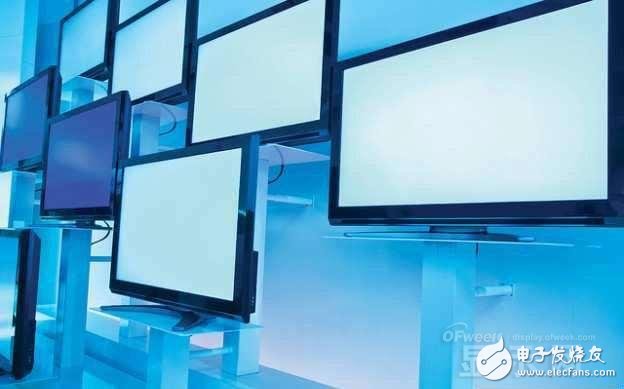Judging from the recent performance of major panel manufacturers, the decline in LCD panel prices since last year and the increasingly fierce competition in the market have continued to affect companies. In the first half of this year, the profitability of major companies has declined. . However, since the third quarter, the price of LCD panels has risen across the board, which may further enhance the profitability of panel manufacturers. After more than a year of price declines, the third quarter of TV panels ushered in the peak season, not only the growth of shipments, the price of TV panels continued to rise in July and August, and it is estimated that the increase in August below 55 inches will be about 2-3 US dollars. WitsView Research Vice President Qiu Yubin pointed out that the third quarter of this year will be the peak of TV panel prices. It is worth noting that there are not many surprises in the fourth quarter, and prices are likely to be adjusted. In the first quarter of next year, China’s new production capacity will increase. pessimistic. Qiu Yubin said that TV panel prices started to stop falling and rebounded in June. Chinese panel makers reported reducing the production of 32-inch panels. With the 618 promotion, the quotations of 32-inch panels went up. In July and August, prices of 43-inch panels and above increased. The monthly average increase is about US$2, and the strength is not as strong as expected, mainly due to the pressure of brand stocking in the third quarter, but the renewal of the purchase in the fourth quarter depends on whether sales improve. Judging from the forecast data of Qunzhi Consulting, panel prices in August will usher in an overall increase, and the increase in some sizes will expand. The reason is: sales in overseas markets have improved, TV manufacturers have continued to actively prepare for overseas sales, and demand for TV panels in the peak season from July to August is strong. In an environment where the global supply and demand of LCD TV panels are tight, panel manufacturers are actively pushing prices up. In response to the panel price trend, TCL Group said in the survey that with the structural adjustment of the supply side in the second half of the year and the arrival of the peak season for demand-side terminal manufacturers, it is expected that the stabilization and recovery of TV LCD panel prices is expected to continue. It is expected that next year's panel demand will be simultaneously driven by the small increase in TV sales, the continuous increase in average size, and the emergence of various new applications. Liu Xiaodong, president of BOE, believes that there are three main reasons for this wave of rise: one is the adjustment of the product structure of panel makers, such as BOE reducing the production of small and medium-sized TV panels such as 32 inches, while increasing the production of extra-large TV panels of 65 inches and above; second, The panel factory actively adjusted the capacity utilization rate; thirdly, the third quarter of each year is the traditional peak season, with increased demand and strong destocking. Liu Xiaodong predicts that this round of the phased rise in TV panel prices may continue until October this year, but it will not be enough to reverse the overall situation of the industry. Bian Zheng said that the follow-up market trend of TV panel prices will also need to look at the sales of North America’s “Black Friday†and China’s “Double Eleven†in the fourth quarter of this year. If global market demand does not significantly boost, as the second half of this year and next year With the continuous release of new production lines, the future test of the panel industry will only become greater and greater. Because the global color TV market has basically entered the stock market, it is difficult to consume the ever-increasing production capacity only by the large-size TV market. In the future, the continuous maturity and expansion of commercial displays and new application displays will likely become new in the panel industry. opportunity. Qiu Yubin believes that the price trend of TV panels in September this year should be observed. The highest peak of this year will fall in the third quarter. Prices in the fourth quarter may be adjusted. There will be weakening pressure from October to November, and TV panel prices will be revised next year. Qiu Yubin pointed out that the first quarter of next year is pessimistic, and BOE will accelerate the capacity expansion of its 10.5 generation plant in China. In addition, CLP Rainbow 8.6 generation line, Panda Optoelectronics Chengdu 8.6 + generation line mass production, and the first quarter of next year Huaxing The 11-generation line will join mass production, and it is expected that production capacity will increase significantly in the first half of next year. Coupled with the off-season of demand, the imbalance between supply and demand will become more obvious. In the first half of this year, the panel industry was affected by the global market environment and the decline in product prices, and the revenue of panel manufacturers declined to varying degrees. As a leading company in the panel industry, LGD has suffered consecutive losses in the last two quarters. LGD’s operating loss in the second quarter was 228.1 billion won, compared with a profit of 804 billion won in the same period in 2017. In addition, in the second quarter of 2018, LGD sales also fell 15.4% year-on-year to 5.6 trillion won. It is understood that one aspect of LGD’s large losses is due to the decline in LCD panel prices; on the other hand, the decline in Apple’s LTPS mobile phone panel orders also affected LGD’s earnings in the first half of the year. At the same time, LGD’s small size production The OLED panel is also not as smooth as expected, so far it has not generated any profits. The preliminary financial report released by Samsung Electronics shows that the company’s operating profit for the quarter was 14.8 trillion won (approximately US$13.2 billion), an increase of 5.2% from 14.07 trillion won in the same period last year; revenue was 58 trillion won, compared with In the same period last year, it fell by 4.9%. The display panel business is a large part of Samsung Electronics' revenue. While Samsung Electronics and Apple compete in the high-end smartphone market, the company is also the only supplier of Apple's iPhone X OLED display. The operating profit of Samsung's display business in the second quarter was 140 billion won, down from 1.7 trillion won in the same period last year. In addition to Samsung and LGD, panel manufacturers such as JDI, AU Optronics, Innolux, and Huaying Technology have also experienced declines in varying degrees. Innolux's consolidated revenue for the second quarter of 2018 was NT$66.5 billion, a decrease of 21.4% from the same period last year, and a 0.4% decrease from the consolidated revenue of the first quarter of 2018. Large-size consolidated shipments totaled 31.99 million units, an increase of 14% compared to 28.07 million units shipped in the first quarter of 2018; small and medium-sized consolidated shipments totaled 68.28 million units, compared with 6,857 units shipped in the first quarter of 2018 Compared with 10,000 pieces, it is 0.4% less. AU Optronics, another Taiwanese panel manufacturer, had consolidated revenues of NT$75.05 billion (about 16.38 billion yuan) in the second quarter of this year, a year-on-year decrease of 11.1%. According to JDI’s financial report for the first quarter of fiscal year 2018 (April-June), JDI’s net loss was 1.77 billion yen (approximately US$15.9574 million) and net sales were 130.281 billion yen (approximately US$1.175 billion). A year-on-year decrease of 45.2%. JDI said that due to the shift to OLED screens by some Chinese smartphone manufacturers and inventory adjustments, shipments to Apple are also declining. For Huaying Technology, it directly announced the semi-annual report. From the perspective of Huaying Technology’s three major businesses, the panel business suffered the most serious losses. Huajiacai’s net profit loss was as high as 295 million yuan, which directly dragged down Huaying Technology’s overall revenue. . Huaying Technology stated that the Huajiacai project began to accrue depreciation since its mass production in July last year. After that, when the smartphone screen ratio was switched from the traditional 16:9 to 18:9 full screen process, the production line was switched and the product was produced. Customer certification takes a long time, which affects the progress of Huajiacai's operating income. At the same time, due to the shortage of TDDI ICs, the mass production time of some of Huajiacai's embedded touch mobile phone products was delayed, and the overall capacity utilization rate was low, resulting in high unit production costs. Truly International has been at a loss since the second quarter of last year. The group's consolidated net business in June 2018 was approximately HK$1.716 billion, a year-on-year decrease of approximately 3.8%. For the six months ended June 30, 2018, the accumulated consolidated net operating income was approximately HK$9.065 billion, a year-on-year decrease of approximately 16.3%. One of the main reasons given by Truly was that it was affected by the associated company Truly Huizhou. The company began to accrue depreciation, and its capacity utilization rate and yield rate were both in a ramp-up period, which resulted in significant losses. According to Visionox's "2018 Semi-Annual Report", the company's operating income in the first half of the year was 475 million yuan, a year-on-year increase of 3778.62%; the net profit attributable to shareholders of listed companies was 16 million yuan, a year-on-year increase of 116.47%. Regarding the reasons for the double growth, Visionox said that the main reason was that the company's holding subsidiaries and Sun Company's application for government subsidies in the first half of 2018 went well, and the government subsidies received had a positive impact on the company's total profits. According to the announcement, in the first half of the year, Visionox's subsidiaries and Sun Company received a total of 835 million yuan in government subsidies. At present, the domestic panel leaders BOE, China Star Optoelectronics, Shenzhen Tianma, etc. have not yet announced the results of the second quarter or the first half of the year, but the impact of the overall environment and economy may not be too good. In March of this year, BOE officially launched the world’s first 10.5G product line focusing on 65-inch TV panels. Driven by the 2018 World Cup in Russia, it won more orders for 32-inch panels and increased the output of the 8.5G product line in Fuqing, southern China. , BOE successfully became the world's top TV panel supplier in the second quarter of 2018. However, panel prices in the first half of the year were at a historical low, and the first quarter is the traditional off-season. It is not easy for BOE to make big profits in the first half of the year. According to TCL Group’s first half performance forecast, in the first half of this year, the production volume of CSOT’s t1 and t2 production lines increased by 7.49% year-on-year, continuing to maintain full production and sales, t3 production line production capacity increased steadily, and t4 and t6 construction projects went smoothly Advance. However, the average price of major size panels in the first half of the year was significantly lower than the same period last year, resulting in a year-on-year decline in the performance of CSOT. In the newly disclosed Investor Relations Activity Record Form, Shenzhen Tianma A stated that, in accordance with the "Accounting Standards for Business Enterprises" and the company's accounting policies, the company's production line machinery and equipment are depreciated for 10 years. At present, the company's a-Si production line has gradually entered the end of depreciation. For example, the Shanghai Optoelectronics G5 generation line has been depreciated, and the Shanghai Tianma G4.5 generation line has technical renovations, so the depreciation will continue to be depreciated within this year. Chengdu Tianma, Wuhan The depreciation of Tianma G4.5 generation line will be gradually completed in the past two to three years, and it is expected to have a positive impact on the company's performance by then. Although the decline in panel prices in the first half of the year led to a decline in the performance of panel manufacturers, since the third quarter, TV panel prices have increased to varying degrees, with an overall increase of about 5% to 10%. Panel prices rose sharply in the third quarter, providing breathing space for panel makers. Prices and volumes have risen this season, and profits will be significantly improved. Ev Charging Cable,Electric Car Charging Cable,Type 2 Charging Cable,32A Ev Charging Cable Yangzhou JERI New Energy Co., Ltd. , https://www.jrevcharging.com

